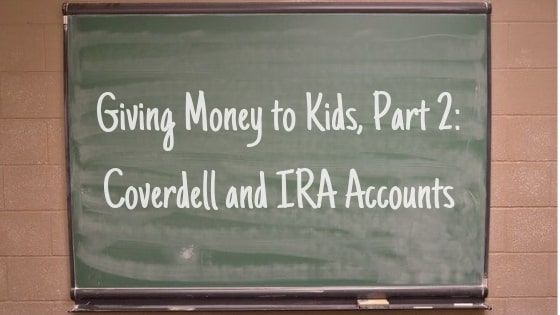
When faced with this decision-making process in practice, if, for whatever reason, a 529 college savings plan doesn’t seem like the right vehicle, three other avenues are typically left to explore. Each of the three maintains some form of tax benefit. I think this is the most important consideration once you’ve decided that the child will use the money for education. However, only one is specifically an education savings vehicle while the other two very much serve an alternative purpose.
Coverdell
First is the Coverdell Education Savings Account. A Coverdell is somewhat of a quirky account type. Look at it as a hybrid between a Roth IRA and a 529 plan with its own unique set of rules. Investors can contribute up to $2,000 to a Coverdell for the benefit of an under-18-year-old annually. They can invest this money into effectively anything they could invest a regular brokerage account in. This is much more accommodating than a 529 plan. Although the contributions are not deductible, the money in the account does grow tax-deferred. And, if investors withdraw to pay for primary, secondary, or post-secondary education expenses, their withdrawals are tax-free.
Like a 529 plan, investors can use Coverdell money for private elementary and high school tuition. They can even put it toward less-direct education-related expenses, like a computer for school. However, unlike a 529 plan, income thresholds may limit contributions to a Coverdell. If your Modified Adjusted Gross Income (MAGI) is greater than $110,000 or $220,000 (single or joint, respectively), you can not contribute to a Coverdell at all. Also, when the designated beneficiary reaches age 30, the account owner must change the beneficiary to someone under the age of 30 to avoid taxes and penalties.
IRAs
But let’s say that you’re exploring for a more creative solution. Even though you believe the child you’d like to benefit will use this money for education expenses, you’re not entirely sure. Even more, let’s say that you’re not entirely sure you’d like to “give” this money to your child for any specific purpose, at least not today. Interestingly enough, your Traditional and/or Roth IRA can serve as a pretty tidy education fund to accommodate these thoughts.
Traditional
With a Traditional IRA, you can look at distributions you take to pay for “qualified higher education expenses.” These can be for yourself, your children, or your grandchildren as a “normal” distribution, regardless of your age. This is because the circumstance is an exception to the 10% premature distribution penalty tax. If your contributions to the IRA were deductible or rolled over from a deductible employer-sponsored plan, like a 401(k), then the distribution is still taxable as income. If your contributions were non-deductible — and this is specifically a great use of a non-deductible IRA — then only the portion of the distribution attributed to growth would be taxable. The remainder would be a tax-free return of principal. Remember: In both cases, you also potentially have had years of tax-deferred growth.
Roth
Roth IRAs continue down a similar path as non-deductible Traditional IRAs, except for one key difference. The rules for Roth IRA distributions state that, it’s always your principal that comes out first. What this means is that you could take distributions to pay for higher education expenses — or literally anything — and those distributions would be tax-free. Once you do go above the amount you put into your Roth IRA, and assuming any Roth IRA for you has been open for five calendar years, then your distributions are taxable. But again, there is no 10% premature distribution penalty tax because of the exception to the penalty discussed above.
Keep in mind that, although this can work out well depending on your circumstances, there are a few key drawbacks to using your IRA as a college fund. First, even though an IRA shelters the balance from the federal aid formula as an asset, the government treats distributions as income. That means any money taken out works its way back into the formula there, affecting aid for the following school year. Second, and this is true of a 529 plan and a Coverdell, investors must take distributions in the same year that the expenses occur. They can’t use distributions to repay student loans or prior expenses.
Finally, remember that the purpose of an IRA is a retirement savings vehicle. Once the money is out to pay for college expenses, it’s no longer earning returns. The only way to get money back in is through normal, capped contributions.
